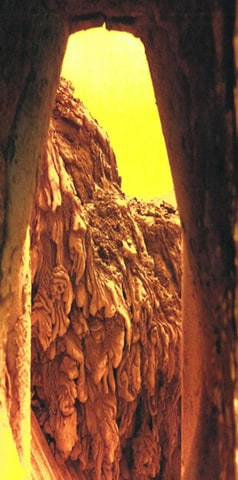
 Accurate control and measurement of airflow is one of the most important aspects of boiler and pulverizer optimization. High primary airflow can cause poor coal fineness, poor fuel balance, non-optimum combustion and consequently poor boiler performance. Low primary airflow can cause burner pulsation, windbox fires, fuel line pluggage, inability to maintain mill outlet temperature, roll skidding (rumbling), pulverizer fires and excessive pyriting. When pulverizer primary air differs from optimum, it is usually higher than desired. Higher primary airflows which are detrimental to pulverizer and boiler performance sometimes have perceived benefits such as increased coal throughput, elimination of coal spillage and better response time.
Accurate control and measurement of airflow is one of the most important aspects of boiler and pulverizer optimization. High primary airflow can cause poor coal fineness, poor fuel balance, non-optimum combustion and consequently poor boiler performance. Low primary airflow can cause burner pulsation, windbox fires, fuel line pluggage, inability to maintain mill outlet temperature, roll skidding (rumbling), pulverizer fires and excessive pyriting. When pulverizer primary air differs from optimum, it is usually higher than desired. Higher primary airflows which are detrimental to pulverizer and boiler performance sometimes have perceived benefits such as increased coal throughput, elimination of coal spillage and better response time.
Optimum primary airflow on a bowl mill is 1.8 to 2.0 pounds of air per pound of coal. Under no circumstances can airflow be lowered to a point where burner line velocity drops below 3,000 Fpm. For this reason, a minimum airflow must be calculated. Due to minimum airflow requirements, at some point on the operating range of a pulverizer, air to fuel ratio will be higher than 1.8 to 2.0 pounds of air per pound of coal. Minimum airflow requirements are typically calculated for 3,250 Fpm to allow for imbalances between burner lines.
Orifices are installed in the burner lines to promote good burner line air balance. Orifices are needed to compensate for differences in system resistance between each burner line due to the number of bends and length of piping.
The purpose of installing burner line orifices is to ensure equal system resistance between separate burners lines. Equal system resistance is best ascertained by performing a clean air test. Unless a burner line imbalance is observed during clean air tests, replacement of the orifices is not warranted. The clean air method of fuel line balancing is the first step in balancing fuel to individual burners. It is important to remember that burner line orifices are not the only factor that effects burner line air balance. Other variables that effect clean air balance are as follows:
Clinkers attached to the burner nozzle tips or a malfunctioning burner shut-off valve can easily have a much more profound influence on burner line air balance. Performing clean air tests periodically will assist in determining if any of these factors might be present. As mentioned previously, burner line orifices are intended to balance clean airflow. If clean air is balanced, it is usually not necessary to inspect coal line orifices.